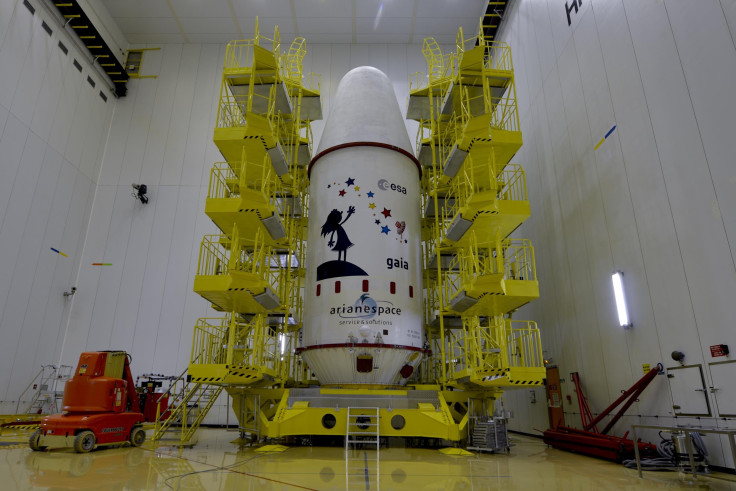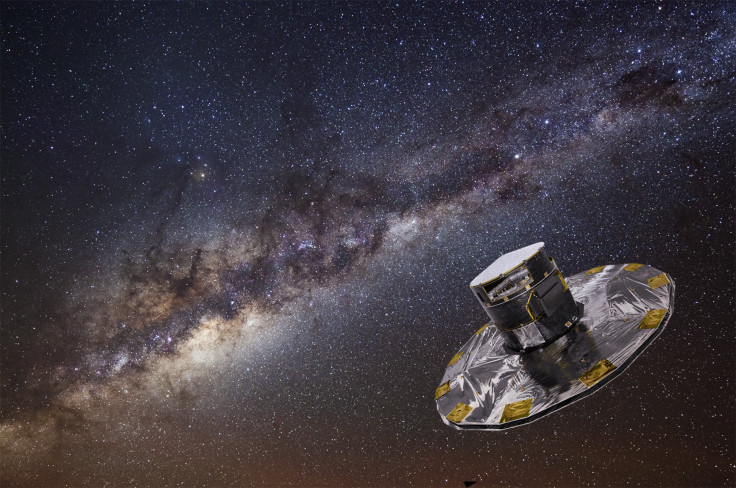European Space Agency Readies Gaia, Its Milky Way Surveyor, For Launch
The European Space Agency, or ESA, is getting ready for the launch of Gaia. The surveyor will launch on Dec. 19, and its primary objective will be to observe the Milky Way and a billion stars.

On Friday, Dec. 13, the ESA released an image of the Gaia inside its fairing, a metal structure that will protect the spacecraft during the launch. The ESA began the final stages of flight prep earlier in December when the Gaia was loaded up with the necessary propellants and the team spent the week setting up for the launch. The Soyuz rocket that will be used to launch the Gaia into space is sitting in the launch pad at the Spaceport, which located in French Guiana.
On Sunday, Dec. 15, the upper composite of the launcher, which includes the upper stage of the rocket, the Gaia and its cap, was assembled at the Spaceport. The ESA’s space observatory will launch on Dec. 19 at 4:12 EST and will travel 1.5 million kilometers, or about 932,057 miles, away from Earth to create a map of the Milky Way.
The Gaia’s task is a simple one, to “make the largest, most precise three-dimensional map of our Galaxy by surveying more than a thousand million stars, according to the ESA. The space observatory will map the motion of a billion stars and observe target stars up to 70 times, mapping changes in brightness, position and distance over the course of five years. Another component of the Gaia’s research will include the observation of 500,000 quasars, or active galactic nuclei.

The data collected by Gaia will help researchers gain new insight into the evolution of the Milky Way and the origin of the galaxy, the ESA noted.
To make these observations possible, the ESA equipped the Gaia with the “largest digital camera in the solar system,” a “billion pixel” camera that actually combines 170 cameras to create a mosaic of each passing star. The spacecraft will also be equipped with two telescopes and three scientific instruments. The Astrometric instrument, or ASTRO, will monitor star position, motion and distance; the Photometric instrument, will measure light intensity; and the Radial Velocity Spectrometer, or RVS, will determine the velocity of celestial objects.
© Copyright IBTimes 2024. All rights reserved.












